Ryan Schneider's Blog, page 2
April 5, 2018
Dropping F-bombs on Mars
So here’s an interesting topic: profanity in art and entertainment.
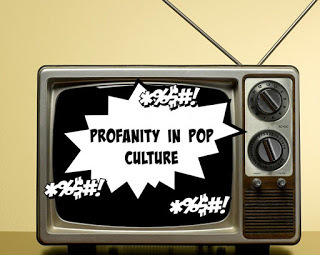 Obviously, art and entertainment are subjective, so some people will be fine with profanity while others will not be.
Obviously, art and entertainment are subjective, so some people will be fine with profanity while others will not be.But is there a middle ground?
When is profanity acceptable or perhaps even appropriate in a book, television show, or movie?
Some people would say it never is.
Other people say as much as is needed to tell an authentic story.
Other folk might say the more the better.
Surely it varies.
 But is there an appropriate time and place for it? Perhaps it’s a you-know-it-when-you-see-it kind of thing. An occasional swear word here and there when used in context can underscore the emotional component of a scene. And it is certainly often representative of “real life”. People use profanity in their daily lives all the time, some more than others; young people probably more; parents with small children trying to set a good example probably less.
But is there an appropriate time and place for it? Perhaps it’s a you-know-it-when-you-see-it kind of thing. An occasional swear word here and there when used in context can underscore the emotional component of a scene. And it is certainly often representative of “real life”. People use profanity in their daily lives all the time, some more than others; young people probably more; parents with small children trying to set a good example probably less.But is there a standard everyone can agree upon?
Take for example the novel The Martian by Andy Weir. It was a publishing fairy tale: indie writer pens sci-fi Mars-based technically brilliant survival epic, self-publishes online, book finds an audience and takes off, gets adapted into a big-time movie, and everyone is happy.
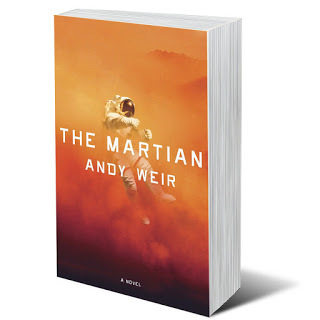 But are they?
But are they?Some people were turned off by the extremely detailed and technical scenes in the story. Long explanations about space flight, biology, horticulture, chemistry, physics, etc. Yet, for others, these elements were precisely what they adored about the story because it was the foundation of the realism. Mr. Weir certainly did his research. He clearly loved the science and engineering and he poured that love into the manuscript.
But what of the profanity?
Was it necessary?
And before we go any further, please do not misunderstand: I am by no means picking on Andy nor on The Martian. He wrote a heckuva book. He knocked it out of the park. So my intent is not to bash the author or his work.
But The Martianwas what I was reading when I first conceived of this concept of wondering about profanity in our writing. An f-bomb or s-bomb seems appropriate when writing. But have you ever opened one of your works in Word, for example, and done a search for “f#!k” or “s#!t”?
I have.
I was shocked.
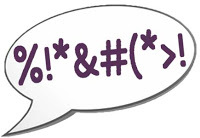 It hadn’t even occurred to me to question it. But once I discovered that there were dozens and dozens of these words, I began to wonder why I had written them in the first place. In the heat of the moment, while crafting a scene, profanity can seem perfectly appropriate. And perhaps it is. But taken as a whole when reading the entire book, do we want our Dear Reader to think back, “Wow, that was a really good book. But boy oh boy did it have far too much profanity. Wtf?”
It hadn’t even occurred to me to question it. But once I discovered that there were dozens and dozens of these words, I began to wonder why I had written them in the first place. In the heat of the moment, while crafting a scene, profanity can seem perfectly appropriate. And perhaps it is. But taken as a whole when reading the entire book, do we want our Dear Reader to think back, “Wow, that was a really good book. But boy oh boy did it have far too much profanity. Wtf?”Probably not. Unless perhaps the book is a treatise on the etymological history of profanity throughout the ages. But even then I suspect a savvy editor would encourage the use of placeholders or visual edits of some kind, with asterisks placed strategically between first and last letters so readers know which word is being referred to without having to read it 5000 times. You’d probably want to go wash your brain somehow afterwards.
The reason I bring all of this up is because of the opening sentence in The Martian.
Now, again, a disclaimer: I loved the book. Awesome job, Andy! Like, holy crap for real, dude. It’s got more than 30,000 reviews on Amazon and a 4.7-star average; so, it’s not merely my opinion: I think we can collectively and safely say that the book is a success.
With that being said, the opening line of The Martian is:
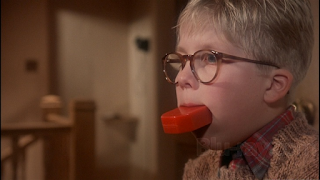 “I’m pretty much fucked.”
“I’m pretty much fucked.”So, there it is. Right? A big fat f-word right there. Nowhere to run. Except perhaps out of the book store or to another website, so to speak. Which would be a shame because the story is awesome. So, is it undermined by dropping an f-bomb in the opening sentence?
A common technique among writers, editors, agents, and other folk in the literary world is the paragraph test. You read the opening paragraph of a manuscript or a published novel and, based upon that paragraph, you decide if you want to continue reading. Which is certain to influence your buying decision.
An even more stringent technique is the sentence test. The writer doesn’t get so much as an entire paragraph to entice their prospective reader; their story succeeds or fails, is read or abandoned, is purchased or put down, based solely upon its opening sentence.
So, do you want an f-bomb in that opening sentence?
Perhaps you’re the type of person/reader who would say, “F**k yeah I want an f-bomb in my opening sentence. That’s ballsy!”
And perhaps it is.
I suspect such readers would be in the minority.
 Once during a writer’s workshop retreat I attended, a writer put forward a short story titled “Beaten and F#!ked”. These were also the opening three words of the story. It was about a woman who had been, well, you get the idea. It was rough going. The reaction was mixed. Some attendees liked it because it was raw and hardcore. Others, some of them the panelists (the “professional” writers who took their craft seriously and who were being paid to lend their expertise to the conference), stated outright that both the title and the opening sentence were vulgar and offensive and that they would absolutely not read such a piece.
Once during a writer’s workshop retreat I attended, a writer put forward a short story titled “Beaten and F#!ked”. These were also the opening three words of the story. It was about a woman who had been, well, you get the idea. It was rough going. The reaction was mixed. Some attendees liked it because it was raw and hardcore. Others, some of them the panelists (the “professional” writers who took their craft seriously and who were being paid to lend their expertise to the conference), stated outright that both the title and the opening sentence were vulgar and offensive and that they would absolutely not read such a piece.The author of the story was perfectly fine with this feedback, by the way. So it was not a matter of awareness (or lack of). Which was also interesting.
Sometimes I think people write about stuff because they either know absolutely nothing about it, or because they know far too much about it.
But I digress.
Back to the 2014 smash-hit The Martian.
Here are the opening lines:
"I’m pretty much fucked.That’s my considered opinion.Fucked.Six days into what should be the greatest two months of my life, and it’s turned into a nightmare."
So, not only is there an f-bomb in the opening sentence, there is another one four words later, just in case you missed the first one, perhaps.
The question, then, is if these doozies are warranted.
If you put yourself in the place of Mark Watney, our indefatigable protagonist, standing there actually on the surface of friggin Mars, alone, abandoned, with no way to get home, and with no manner in which to be rescued, thinking about what your Wikipedia page was going to say about you, then yeah, an f-bomb is totally 150% appropriate.
But we’re not on Mars with no ride home. We’re sitting there reading a book. Do we want our eyes and sensibilities assaulted with the great granddaddy of all epithets?
I dunno.
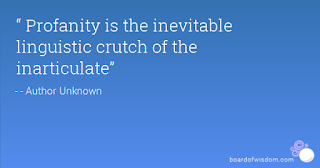 For me personally, I didn’t care for it. I think “screwed” would have been a less brazen word choice, one which would have conveyed sentiment sufficient to the situation without risking alienating the reader. I’ve heard it said that profanity is linguistic laziness. Back in college, I read in a textbook that there are more than 1 million words in the English language (making it the largest language on earth). French is second-largest with about 300,000 words. I don’t recall what textbook it was and I can’t be bothered to go dig into the actual numbers because I’m busy doing this. But feel free to search if you’re curious. The point is that with more than a million words from which to choose, do we really need to go straight to the F-word?
For me personally, I didn’t care for it. I think “screwed” would have been a less brazen word choice, one which would have conveyed sentiment sufficient to the situation without risking alienating the reader. I’ve heard it said that profanity is linguistic laziness. Back in college, I read in a textbook that there are more than 1 million words in the English language (making it the largest language on earth). French is second-largest with about 300,000 words. I don’t recall what textbook it was and I can’t be bothered to go dig into the actual numbers because I’m busy doing this. But feel free to search if you’re curious. The point is that with more than a million words from which to choose, do we really need to go straight to the F-word?Andy Weir obviously chose to.
And like we said, The Martian has more than 30,000 reviews and a 4.7-star average, so it is without a doubt a success.
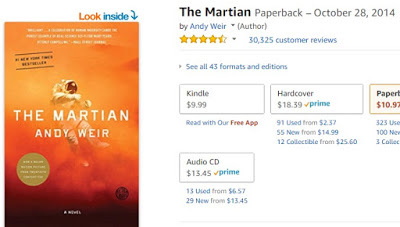
The author and screenwriter William Goldman once said, “If it works, it’s right.” Given the large number of reviews received by The Martian, clearly the story works. So it must be right.
Right?
If we could somehow have Amazon email all 30,000 reviewers of The Martian and say, “So, uh, thanks for buying the book and everything and for leaving a review, we really appreciate it. By the way, did the f-bomb in the opening sentence bother you?”
I would like to know the answer to that question.
Clearly it didn’t bother them enough to stop reading or to choose not to leave a review. In perusing the 1-star reviews, the most-prevalent criticism is the science, math, chemistry, etc., which some readers found to be a snooze-fest. There is also mention of a Classroom Edition of the book, one safe for children. So that’s good.
But what about the rest of us?
Do we need the f-bomb, front and center, in the opening sentence?
And what about the other expletives?
I kept a log while I was reading The Martian. I tracked the four-letter words. I don’t know why. I’ve never done so before. I’m not particularly averse to profanity when it’s contextual.
But what I found was kinda surprising.
The results are as follows:(and, again, this is no way a criticism of Andy or of The Martian; it’s more an exploration, really)
f**k = 39s**t = 44p**s = 3G.D. = 3a-hole = 13S.O.B. = 4___________TOTAL = 106
Is that a lot?
Too much?
Not enough?
Would the book have sold more copies if only the classroom edition were made available?
Does the profanity have no impact at all?
There’s probably no way to know.
But it begs the question: do we want and/or need four-letter words in our entertainment? (Remember: entertainment is largely about escape.)
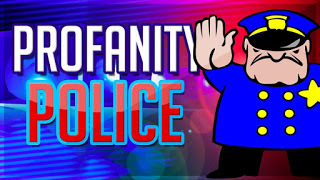 I suspect the answer is as subjective as the works themselves and the genres in which they reside. We certainly don’t want to delve into the sticky realm of censorship. Right? If a writer wants to write a book where literally every sentence has at least one f-bomb in it, that is and should be their choice. Right? Those who object to it won’t read it and won’t buy it. So if we use free-market principles to decide what’s valid (morally, artistically or otherwise) and a profanity-based book fails, we have our answer. If it becomes a bestseller, we have an entirely different answer. Such a tactic would likely be a mere gimmick. Unless of course it were underscored by a great story and superb characterization.
I suspect the answer is as subjective as the works themselves and the genres in which they reside. We certainly don’t want to delve into the sticky realm of censorship. Right? If a writer wants to write a book where literally every sentence has at least one f-bomb in it, that is and should be their choice. Right? Those who object to it won’t read it and won’t buy it. So if we use free-market principles to decide what’s valid (morally, artistically or otherwise) and a profanity-based book fails, we have our answer. If it becomes a bestseller, we have an entirely different answer. Such a tactic would likely be a mere gimmick. Unless of course it were underscored by a great story and superb characterization. In which case we would be right back to where we are now with The Martian: is the profanity necessary?
Or does the inherent artistic subjectivity render the question unanswerable and therefore moot?
Does profanity bother you?
 If so, how much is required before you begin to notice it and begin thinking, “Okay, enough with the potty mouth!”
If so, how much is required before you begin to notice it and begin thinking, “Okay, enough with the potty mouth!”Is it different if you’re reading a book versus watching a movie?
Is it different if you’re watching by yourself versus watching with others?
Is profanity akin to sex in a story?
Here’s a brief informal poll:
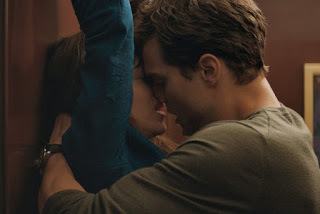 You prefer watching the 50 Shades film adaptations:
You prefer watching the 50 Shades film adaptations:A. AloneB. With a spouse/significant other/etc.C. With friendsD. With your parents
The inevitable and noteworthy lack of answer ‘D’ provides insight.
But if we substitute profanity for sexual content, do the responses shift?
Does the quantity matter? What amount of four-letter words would make you uncomfortable, embarrassed, or perturbed when watching with a given audience?
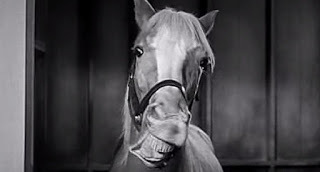 Should we collectively consider taking a small step back in time with regards to sex and profanity in our entertainment? Like in the 1950s? I don't recall Mr. Ed or Mr. Wilson or Mike Brady dropping any f-bombs.
Should we collectively consider taking a small step back in time with regards to sex and profanity in our entertainment? Like in the 1950s? I don't recall Mr. Ed or Mr. Wilson or Mike Brady dropping any f-bombs.Or should we plow ahead with balls-to-the-wall free-market artistic anarchy?
Should we be using terms like “balls-to-the-wall” in blog posts?
Should the collective cultural entertainment rating be a resounding “G”? (Unless adults seek out material of other ratings, as they are free to do within the bounds of the law, of course.)
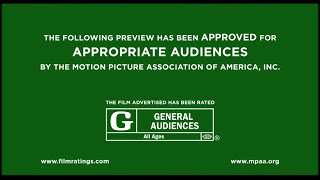
Is the downward spiral of societal standards with regards to sex, pornography, drugs, profanity, violence, etc. perfectly acceptable because, hey, it’s only art?
Or do we need to do some soul searching as a country, as a culture, as a race? And perhaps embrace the more refined components of an open but just society?
Is this conversation evidence that such an inquiry is needed?
 What would it take to activate our collective GPS and find a different route?
What would it take to activate our collective GPS and find a different route?Is it even possible?
Is there too much momentum already accumulated?
Art imitates life, right?
But life also imitates art.
Most people would agree that they want world peace, economic advantage, and a nice life for everyone on earth, right?
People who work in the entertainment industry, for example. Such individuals have a large platform and often an equally-large voice.
So why don’t they use it to create the art which will be imitated in life in order to create the world they claim to want?
Why continue to create “entertainment” and “art” which programs darkness and depravity into the cultural consciousness? Is that not the opposite of what they say they want?
 How about creating art and entertainment bestowed with benevolence, virtue, light, hope, harmony, goodness, and love, all of which represent the world we WANT to see, have, and enjoy.
How about creating art and entertainment bestowed with benevolence, virtue, light, hope, harmony, goodness, and love, all of which represent the world we WANT to see, have, and enjoy.If we ever want to grow actual potatoes on Mars, similar to Mark Watney in The Martian, it’s something we should think about.
Published on April 05, 2018 13:37
Growing Potatoes on Mars: Profanity in Art and Entertainment
So here’s an interesting topic: profanity in art and entertainment.
 Obviously, art and entertainment are subjective, so some people will be fine with profanity while others will not be.
Obviously, art and entertainment are subjective, so some people will be fine with profanity while others will not be.But is there a middle ground?
When is profanity acceptable or perhaps even appropriate in a book, television show, or movie?
Some people would say it never is.
Other people say as much as is needed to tell an authentic story.
Other folk might say the more the better.
Surely it varies.
 But is there an appropriate time and place for it? Perhaps it’s a you-know-it-when-you-see-it kind of thing. An occasional swear word here and there when used in context can underscore the emotional component of a scene. And it is certainly often representative of “real life”. People use profanity in their daily lives all the time, some more than others; young people probably more; parents with small children trying to set a good example probably less.
But is there an appropriate time and place for it? Perhaps it’s a you-know-it-when-you-see-it kind of thing. An occasional swear word here and there when used in context can underscore the emotional component of a scene. And it is certainly often representative of “real life”. People use profanity in their daily lives all the time, some more than others; young people probably more; parents with small children trying to set a good example probably less.But is there a standard everyone can agree upon?
Take for example the novel The Martian by Andy Weir. It was a publishing fairy tale: indie writer pens sci-fi Mars-based technically brilliant survival epic, self-publishes online, book finds an audience and takes off, gets adapted into a big-time movie, and everyone is happy.
 But are they?
But are they?Some people were turned off by the extremely detailed and technical scenes in the story. Long explanations about space flight, biology, horticulture, chemistry, physics, etc. Yet, for others, these elements were precisely what they adored about the story because it was the foundation of the realism. Mr. Weir certainly did his research. He clearly loved the science and engineering and he poured that love into the manuscript.
But what of the profanity?
Was it necessary?
And before we go any further, please do not misunderstand: I am by no means picking on Andy nor on The Martian. He wrote a heckuva book. He knocked it out of the park. So my intent is not to bash the author or his work.
But The Martianwas what I was reading when I first conceived of this concept of wondering about profanity in our writing. An f-bomb or s-bomb seems appropriate when writing. But have you ever opened one of your works in Word, for example, and done a search for “f#!k” or “s#!t”?
I have.
I was shocked.
 It hadn’t even occurred to me to question it. But once I discovered that there were dozens and dozens of these words, I began to wonder why I had written them in the first place. In the heat of the moment, while crafting a scene, profanity can seem perfectly appropriate. And perhaps it is. But taken as a whole when reading the entire book, do we want our Dear Reader to think back, “Wow, that was a really good book. But boy oh boy did it have far too much profanity. Wtf?”
It hadn’t even occurred to me to question it. But once I discovered that there were dozens and dozens of these words, I began to wonder why I had written them in the first place. In the heat of the moment, while crafting a scene, profanity can seem perfectly appropriate. And perhaps it is. But taken as a whole when reading the entire book, do we want our Dear Reader to think back, “Wow, that was a really good book. But boy oh boy did it have far too much profanity. Wtf?”Probably not. Unless perhaps the book is a treatise on the etymological history of profanity throughout the ages. But even then I suspect a savvy editor would encourage the use of placeholders or visual edits of some kind, with asterisks placed strategically between first and last letters so readers know which word is being referred to without having to read it 5000 times. You’d probably want to go wash your brain somehow afterwards.
The reason I bring all of this up is because of the opening sentence in The Martian.
Now, again, a disclaimer: I loved the book. Awesome job, Andy! Like, holy crap for real, dude. It’s got more than 30,000 reviews on Amazon and a 4.7-star average; so, it’s not merely my opinion: I think we can collectively and safely say that the book is a success.
With that being said, the opening line of The Martian is:
 “I’m pretty much fucked.”
“I’m pretty much fucked.”So, there it is. Right? A big fat f-word right there. Nowhere to run. Except perhaps out of the book store or to another website, so to speak. Which would be a shame because the story is awesome. So, is it undermined by dropping an f-bomb in the opening sentence?
A common technique among writers, editors, agents, and other folk in the literary world is the paragraph test. You read the opening paragraph of a manuscript or a published novel and, based upon that paragraph, you decide if you want to continue reading. Which is certain to influence your buying decision.
An even more stringent technique is the sentence test. The writer doesn’t get so much as an entire paragraph to entice their prospective reader; their story succeeds or fails, is read or abandoned, is purchased or put down, based solely upon its opening sentence.
So, do you want an f-bomb in that opening sentence?
Perhaps you’re the type of person/reader who would say, “F**k yeah I want an f-bomb in my opening sentence. That’s ballsy!”
And perhaps it is.
I suspect such readers would be in the minority.
 Once during a writer’s workshop retreat I attended, a writer put forward a short story titled “Beaten and Fucked”. These were also the opening three words of the story. It was about a woman who had been, well, you get the idea. It was rough going. The reaction was mixed. Some attendees liked it because it was raw and hardcore. Others, some of them the panelists (the “professional” writers who took their craft seriously and who were being paid to lend their expertise to the conference), stated outright that both the title and the opening sentence were vulgar and offensive and that they would absolutely not read such a piece.
Once during a writer’s workshop retreat I attended, a writer put forward a short story titled “Beaten and Fucked”. These were also the opening three words of the story. It was about a woman who had been, well, you get the idea. It was rough going. The reaction was mixed. Some attendees liked it because it was raw and hardcore. Others, some of them the panelists (the “professional” writers who took their craft seriously and who were being paid to lend their expertise to the conference), stated outright that both the title and the opening sentence were vulgar and offensive and that they would absolutely not read such a piece.The author of the story was perfectly fine with this feedback, by the way. So it was not a matter of awareness (or lack of). Which was also interesting.
Sometimes I think people write about stuff because they either know absolutely nothing about it, or because they know far too much about it.
But I digress.
Back to the 2014 smash-hit The Martian.
Here are the opening lines:
I’m pretty much fucked.That’s my considered opinion.Fucked.Six days into what should be the greatest two months of my life, and it’s turned into a nightmare.
So, not only is there an f-bomb in the opening sentence, there is another one four words later, just in case you missed the first one, perhaps.
The question, then, is if these doozies are warranted.
If you put yourself in the place of Mark Watney, our indefatigable protagonist, standing there actually on the surface of friggin Mars, alone, abandoned, with no way to get home, and with no manner in which to be rescued, thinking about what your Wikipedia page was going to say about you, then yeah, an f-bomb is totally 150% appropriate.
But we’re not on Mars with no ride home. We’re sitting there reading a book. Do we want our eyes and sensibilities assaulted with the great granddaddy of all epithets?
I dunno.
 For me personally, I didn’t care for it. I think “screwed” would have been a less brazen word choice, one which would have conveyed sentiment sufficient to the situation without risking alienating the reader. I’ve heard it said that profanity is linguistic laziness. Back in college, I read in a textbook that there are more than 1 million words in the English language (making it the largest language on earth). French is second-largest with about 300,000 words. I don’t recall what textbook it was and I can’t be bothered to go dig into the actual numbers because I’m busy doing this. But feel free to search if you’re curious. The point is that with more than a million words from which to choose, do we really need to go straight to the F-word?
For me personally, I didn’t care for it. I think “screwed” would have been a less brazen word choice, one which would have conveyed sentiment sufficient to the situation without risking alienating the reader. I’ve heard it said that profanity is linguistic laziness. Back in college, I read in a textbook that there are more than 1 million words in the English language (making it the largest language on earth). French is second-largest with about 300,000 words. I don’t recall what textbook it was and I can’t be bothered to go dig into the actual numbers because I’m busy doing this. But feel free to search if you’re curious. The point is that with more than a million words from which to choose, do we really need to go straight to the F-word?Andy Weir obviously chose to.
And like we said, The Martian has more than 30,000 reviews and a 4.7-star average, so it is without a doubt a success.

The author and screenwriter William Goldman once said, “If it works, it’s right.” Given the large number of reviews received by The Martian, clearly the story works. So it must be right.
Right?
If we could somehow have Amazon email all 30,000 reviewers of The Martian and say, “So, uh, thanks for buying the book and everything and for leaving a review, we really appreciate it. By the way, did the f-bomb in the opening sentence bother you?”
I would like to know the answer to that question.
Clearly it didn’t bother them enough to stop reading or to choose not to leave a review. In perusing the 1-star reviews, the most-prevalent criticism is the science, math, chemistry, etc., which some readers found to be a snooze-fest. There is also mention of a Classroom Edition of the book, one safe for children. So that’s good.
But what about the rest of us?
Do we need the f-bomb, front and center, in the opening sentence?
And what about the other expletives?
I kept a log while I was reading The Martian. I tracked the four-letter words. I don’t know why. I’ve never done so before. I’m not particularly averse to profanity when it’s contextual.
But what I found was kinda surprising.
The results are as follows:(and, again, this is no way a criticism of Andy or of The Martian; it’s more an exploration, really)
f**k = 39s**t = 44p**s = 3G.D. = 3a-hole = 13S.O.B. = 4___________TOTAL = 106
Is that a lot?
Too much?
Not enough?
Would the book have sold more copies if only the classroom edition were made available?
Does the profanity have no impact at all?
There’s probably no way to know.
But it begs the question: do we want and/or need four-letter words in our entertainment? (Remember: entertainment is largely about escape.)
 I suspect the answer is as subjective as the works themselves and the genres in which they reside. We certainly don’t want to delve into the sticky realm of censorship. Right? If a writer wants to write a book where literally every sentence has at least one f-bomb in it, that is and should be their choice. Right? Those who object to it won’t read it and won’t buy it. So if we use free-market principles to decide what’s valid (morally, artistically or otherwise) and a profanity-based book fails, we have our answer. If it becomes a bestseller, we have an entirely different answer. Such a tactic would likely be a mere gimmick. Unless of course it were underscored by a great story and superb characterization.
I suspect the answer is as subjective as the works themselves and the genres in which they reside. We certainly don’t want to delve into the sticky realm of censorship. Right? If a writer wants to write a book where literally every sentence has at least one f-bomb in it, that is and should be their choice. Right? Those who object to it won’t read it and won’t buy it. So if we use free-market principles to decide what’s valid (morally, artistically or otherwise) and a profanity-based book fails, we have our answer. If it becomes a bestseller, we have an entirely different answer. Such a tactic would likely be a mere gimmick. Unless of course it were underscored by a great story and superb characterization. In which case we would be right back to where we are now with The Martian: is the profanity necessary?
Or does the inherent artistic subjectivity render the question unanswerable and therefore moot?
Does profanity bother you?
 If so, how much is required before you begin to notice it and begin thinking, “Okay, enough with the potty mouth!”
If so, how much is required before you begin to notice it and begin thinking, “Okay, enough with the potty mouth!”Is it different if you’re reading a book versus watching a movie?
Is it different if you’re watching by yourself versus watching with others?
Is profanity akin to sex in a story?
Here’s a brief informal poll:
 You prefer watching the 50 Shades film adaptations:
You prefer watching the 50 Shades film adaptations:A. AloneB. With a spouse/significant other/etc.C. With friendsD. With your parents
The inevitable and noteworthy lack of answer ‘D’ provides insight.
But if we substitute profanity for sexual content, do the responses shift?
Does the quantity matter? What amount of four-letter words would make you uncomfortable, embarrassed, or perturbed when watching with a given audience?
 Should we collectively consider taking a small step back in time with regards to sex and profanity in our entertainment? Like in the 1950s? I don't recall Mr. Ed or Mr. Wilson or Mike Brady dropping any f-bombs.
Should we collectively consider taking a small step back in time with regards to sex and profanity in our entertainment? Like in the 1950s? I don't recall Mr. Ed or Mr. Wilson or Mike Brady dropping any f-bombs.Or should we plow ahead with balls-to-the-wall free-market artistic anarchy?
Should we be using terms like “balls-to-the-wall” in blog posts?
Should the collective cultural entertainment rating be a resounding “G”? (Unless adults seek out material of other ratings, as they are free to do within the bounds of the law, of course.)

Is the downward spiral of societal standards with regards to sex, pornography, drugs, profanity, violence, etc. perfectly acceptable because, hey, it’s only art?
Or do we need to do some soul searching as a country, as a culture, as a race? And perhaps embrace the more refined components of an open but just society?
Is this conversation evidence that such an inquiry is needed?
 What would it take to activate our collective GPS and find a different route?
What would it take to activate our collective GPS and find a different route?Is it even possible?
Is there too much momentum already accumulated?
Art imitates life, right?
But life also imitates art.
Most people would agree that they want world peace, economic advantage, and a nice life for everyone on earth, right?
People who work in the entertainment industry, for example. Such individuals have a large platform and often an equally-large voice.
So why don’t they use it to create the art which will be imitated in life in order to create the world they claim to want?
Why continue to create “entertainment” and “art” which programs darkness and depravity into the cultural consciousness? Is that not the opposite of what they say they want?
 How about creating art and entertainment bestowed with benevolence, virtue, light, hope, harmony, goodness, and love, all of which represent the world we WANT to see, have, and enjoy.
How about creating art and entertainment bestowed with benevolence, virtue, light, hope, harmony, goodness, and love, all of which represent the world we WANT to see, have, and enjoy.If we ever want to grow actual potatoes on Mars, it’s something we should think about.
Published on April 05, 2018 13:37
March 31, 2018
10 Questions with Debut Writer Jamie Adams @JamieAdStories
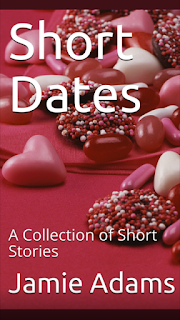
Short Datesa CollectionofShort Stories
byJamie Adams
This author spotlight features Uk-based writer Jamie Adams, author of the new short story collection Short Dates, available now on Amazon.
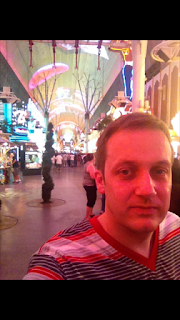 Jamie is a 40 year old teacher who is looking to find an outlet for his creativity through the medium of writing both short stories and Novellas.
Jamie is a 40 year old teacher who is looking to find an outlet for his creativity through the medium of writing both short stories and Novellas.1.How did you get into writing and why do you write?
I write because lots of interesting story snippets are whirling around in my head and I want to let them out. As a teacher I have taught English in school for many years and studied many genres along the way. I want to explore my own style and have some fun along the way.
2.What do you like best (or least) about writing?
I like the process of making a story up, or as I say, letting it out!The hardest thing for me is writing endings so I keep them short and sweet, as for me, stories are all about the build up and twists.
3.What is your writing process? IE do you outline? Do you stick to a daily word or page count, write 7 days a week, etc?
I work four days a week and write on my day off. I also usually write for an hour or so every evening; usually more, as I often get carried away.
4.Who are some other writers you read and admire, regardless of whether they are commercially “successful?”
I adore the work of Joanne Harris, who wrote the best seller, ‘Chocolat’ and many other best sellers. I also like reading Roald Dahl’s work to the children and enjoy his adult books.
5.Should the question mark in the above question be inside or outside the quotes?For me, the question mark should sit within inverted commas – although single or double inverted commas are a matter of choice. My preference is single ones.
6.What’s your stance on the Oxford Comma?
I have no stance.
7.What is your book Short Dates about and how did it come to fruition?
I wanted to challenge myself to create a collection of stories loosely connected by the idea of dates or dating. Some stories relate to finding love and others reflect on different and often lost loves.
8.What’s your current writing project?
I am writing a Novella about three dads whose children go to the same school. They are trying to keep together difficult marriages when a dramatic occurrence drives a wedge between everyone and then binds them together.
9.What book(s) are you currently reading?
I am reading a short story book called, ‘A Cat, a Hat and a Piece of String,’ by Joanne Harris.
10.Who or what inspires your writing?
I am inspired by the children I teach who spend a long time trying to improve their writing and make me want to do better myself.
Finally, is there anything you’d care to add? Please also include where people can read your published stories, buy your book, etc.
Twitter is @JamieAdStories
https://www.amazon.co.uk/Short-Dates-Collection-Stories-ebook/dp/B07BJ4G1HV/ref=sr_1_1?s=digital-text&ie=UTF8&qid=1522434405&sr=1-1&keywords=Jamie+adams
Thanks, Jamie!
Congratulations, once more, upon publishing your first literary work. It takes a lot of work and a lot of courage to do so. Please visit with us again when your novella is ready.
Be sure to grab a copy of Jamie's book from Amazon today!
Published on March 31, 2018 13:55
March 28, 2018
What Makes a Good Book a Good Film?
What makes a book a candidate for a good film?
Answer: it depends.
On many things.
Sometimes, it's the visuals; the story is quite cinematic, begging for a visual representation.
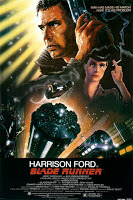 Blade Runner certainly comes to mind.
Blade Runner certainly comes to mind.Also, a thoroughly-visualized world (one perhaps not recently seen) is important. Think Harry Potter (the novel manuscript of which, you'll recall, was roundly rejected by all publishers for over a year; oops).
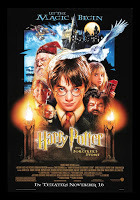
For other books, it's not about the visuals so much as it's about the story, the theme, the message, whether it be serious, quirky, or otherwise. Cohen Brothers films come to mind. You always know you're going to get something wacky yet thought-provoking with them.
No Country for Old Men, for example; which, interestingly, began as a screenplay, became a novel, and then became a movie; so, there are no rules; like William Goldman said: If it works, it's right.
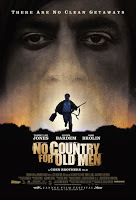
And, finally, it is very much that unknown element which is an almost-mystical combination of cultural and strategic business synchronicities. The process of a book being written, edited, published, adapted, and the film version being produced, with the thousands of people involved (along with a lot of financial investment) is such a massive process, it's a wonder books are published and films are produced.
Yet, despite the significant resources required to do so, both are still art. And art is subjective. That, I believe, is the majority of our answer.
Published on March 28, 2018 13:08
May 3, 2017
10 Questions with Writer, Speaker, & Futurist Kathleen Ann Goonan (@KathleenAnnGoonan)
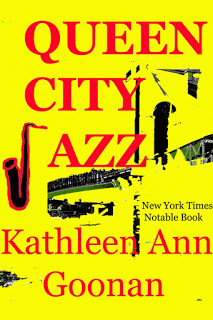
This Author Spotlightfeatures
Kathleen Ann Goonan
author of
QUEEN CITY JAZZ
 Kathleen Ann Goonan is the author of seven critically acclaimed novels, including her groundbreaking Nanotech Quartet: New York Times Notable Book Queen City Jazz, Darrell Award winner Mississippi Blues, and Nebula Award finalists Crescent City Rhapsody and Light Music. In War Times won the John W. Campbell Award for Best Science Fiction Novel of 2007 and was the American Library Association’s Best SF Novel of 2007. Her most recent novel is This Shared Dream. She has published over fifty stories in venues such as Discover Magazine, Asimov’s, The Magazine of Fantasy and Science Fiction, and numerous Best of Year anthologies, some of which are collected in Angels and You Dogs. Professor of the Practice of Science Fiction Studies and Creative Writing at Georgia Tech 2010-2016, her most recent academic work appeared in SFRA Review and in Intelligence Unbound: The Future of Uploaded and Machine Minds, edited by Broderick and Blackwell and in Sisters of Tomorrow: The First Women of Science Fiction (Ed. Yaszek and Sharp, Wesleyan 2016). A novella, “The Tale of the Alcubierre Horse,” will appear in Extrasolar (PS Publishing) in 2017. Her web site is www.goonan.com.
Kathleen Ann Goonan is the author of seven critically acclaimed novels, including her groundbreaking Nanotech Quartet: New York Times Notable Book Queen City Jazz, Darrell Award winner Mississippi Blues, and Nebula Award finalists Crescent City Rhapsody and Light Music. In War Times won the John W. Campbell Award for Best Science Fiction Novel of 2007 and was the American Library Association’s Best SF Novel of 2007. Her most recent novel is This Shared Dream. She has published over fifty stories in venues such as Discover Magazine, Asimov’s, The Magazine of Fantasy and Science Fiction, and numerous Best of Year anthologies, some of which are collected in Angels and You Dogs. Professor of the Practice of Science Fiction Studies and Creative Writing at Georgia Tech 2010-2016, her most recent academic work appeared in SFRA Review and in Intelligence Unbound: The Future of Uploaded and Machine Minds, edited by Broderick and Blackwell and in Sisters of Tomorrow: The First Women of Science Fiction (Ed. Yaszek and Sharp, Wesleyan 2016). A novella, “The Tale of the Alcubierre Horse,” will appear in Extrasolar (PS Publishing) in 2017. Her web site is www.goonan.com.
1.How did you get into writing and why do you write?
I always intended to be a writer, but after some initial success with poetry while in college, I had the somewhat belated realization that I needed to make money (I graduated from Virginia Tech in 1975 with a degree in English; MFA’s were not as ubiquitous then as they are now). I therefore took a master’s Montessori training course so that I could have my own business, control my own time, and begin my writing career in my copious free time. Because my school soon had a hundred students, two locations, and many employees, and because I found that I loved teaching preschoolers and managing a business, that time did not come for a number of years. Maria Montessori was a scientist and developed her method of teaching based on observation and long-running experiments, during which she laid the foundation for our understanding of how humans learn (now being corroborated by fMRI). Seeing how effortlessly children can learn to read, write, and lay the concrete foundations of math at a relatively young age, I had an epiphany about how science works. This lead to my writing science fiction, becoming keenly interested in science and technology ethical issues, and, since 2010, teaching courses about the confluence of science, technology, and culture in the School of Literature, Media, and Communication at Georgia Tech as a Professor of the Practice, where I also teach Creative Writing.
But to move the story back a bit, I awoke from the trance of teaching when I was 33. A voice in a dream said to me, “If you’re going to be a writer, you’d better get started.” Startled, I woke and took this advice to heart. Better yet, I had an entire novel in mind. I wrote early in the morning, during lunch, and on weekends and finished it in a year, a feat which still amazes me, considering that it now takes me two or more years to complete a novel. I then started writing stories and sending them out; within a year I was getting personal notes from Ellen Datlow and Gardner Dozois suggesting that I workshop them. Instead, I left my school, moved to Honolulu with my husband, and began writing full time. I sold travel pieces and mainstream fiction, but no SF. A friend who had read my trunk novel recommended Locus, and there I saw a tiny ad for a six-week writer’s workshop. I attended Clarion West in 1988, which gave my career an SF focus and a push in the right direction.
I think that persevering in a writing career is a fool’s errand, but successful writers are overwhelmingly convinced of the necessity to do so. Belief in one’s own vision can be a curse or a blessing, but is most often a combination of the two. When it works, it is the most satisfying thing to do that I can imagine, other than teaching a child to read.
2.What do you like best (or least) about writing?
Writing.
Actually, writing a first draft puts me into a state of agitation and irritation at how wretchedly the whole process is proceeding until about 45 minutes in, and then it becomes easy. When I look up, hours have passed. Having been a professional writer for twenty-five years, I do have confidence that a story will be wrought, which is helpful. Rewriting—rearranging, cutting, adding new scenes, exploring and pointing up nuances—is the most important part of writing, and the most satisfying.
3.What is your writing process? IE do you outline? Do you stick to a daily word or page count, write 7 days a week, etc?
I have done all of the above. It all depends on what I’m working on. I must say that I’ve never tried the daily word count approach, but I generally write over a thousand words a day. I usually have a necessary scene in mind when I sit down to write, and generally know how I’m going to go about it. If I finish a scene, I’m satisfied.
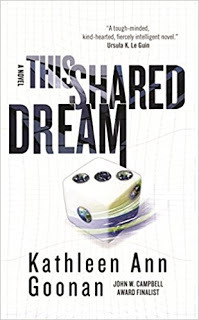 4.Who are some other writers you read and admire, regardless of whether they are commercially “successful?”
4.Who are some other writers you read and admire, regardless of whether they are commercially “successful?” Reading is my drug, and I read omnivorously and catholically, in and out of various genres (SF, mystery, thriller, literary, mainstream, past and present writers). I admire biographers such as Hermione Lee and David McCullough, historical writers such as Max Hastings and Doris Kearns Goodwin, contemporary fiction writers such as Karen Joy Fowler and Zadie Smith, and science writers such as Eric Kandel, Freeman Dyson, E.O. Wilson, and a host of others. I’m particularly interested in the recent spate of books about women in the jet propulsion industry and other sciences, such as Hidden Figures, Rocket Girl (about Mary Sherman Morgan, who developed Hydyne), The Glass Universe, and women scientists in general, such as Lise Meitner, whose biography I taught as part of one of my courses, and Maria Montessori. Lise Meitner became the model for Eliani Hadntz, a character in In War Times(Tor, 2007), my sixth novel, which was the American Library Association’s Best SF Novel of the Year and a John W. Campbell Memorial Award winner; she is also in This Shared Dream (Tor, 2011), recently released as a mm paperback.
5.Should the question mark in the above question be inside or outside the quotes?
Either, depending on whether you are an academic or a civilian.
6.What’s your stance on the Oxford Comma?
I enjoy the flexibility of a neutrality in which either usage is a style choice, not a heresy, in the writing of others or my own. I’m a word and language wonk, so the controversy delighted me.
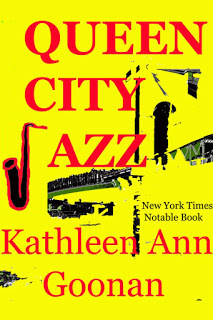 7.What is your book Queen City Jazz about and how did it come to fruition?
7.What is your book Queen City Jazz about and how did it come to fruition?I had been writing stories and selling to professional markets for a year or two after Clarion West 88 when QCJ emerged from a vision I had of a city with giant flowers atop the buildings, which inferred giant bees. Let us call them Bees, for they have an important role in the book.
I knew that the city was Cincinnati, where I was born and from whence my family moved when I was 8, to Honolulu. My memories gave the Flower-City of Cincinnati a decidedly surrealistic slant.
I was reading a lot of science and technology books at the time, including Drexler’s Engines of Creation. My husband, a physician, often mused about fascinating new biological applications; these musings were the foundation of how communications in the Flower Cities work. When the novel opens, many cities in North America had long ago converted to this new biologically-based system after radio communications failed. John Cramer, well-known physicist, suggested one theory of how this might have happened, but during the course of the Nanotech Quartet, which spans a century, several theories are in play.
The little town of Miamisburg, Ohio, first settled and platted by my not-so-distant ancestors in 1801, where my father grew up and where my grandparents had quite recently passed away, insisted on itself as the emotional focus of what I thought was a short story, and then a novella, after I tried setting it just outside of Cincinnati. Once I moved the opening to a Shaker community near Miamisburg, it took off.
My grandfather, Russell Goonan, was born in 1888, and knew the Wright Brothers when they were just bicycle repairmen. He mentioned that there had once been a Shaker community nearby, and said “They didn’t reproduce, so they eventually died out.” Mother Ann and the utopian Shaker experiment fascinated me, and religious belief became the reason that my main characters are outsiders, part of a sect that fears the nano-biotech of the Flower-City technology that emerged when radio communications ceased to work.
The most powerful underpinnings of QCJ are the American arts—ragtime, jazz, fiction, poetry, comics, architecture and design—and history. I called the processes occurring in the city bionan, because communication is intricately modulated and processed biologically.
Queen City Jazzwas published by Tor in 1994, and was a New York Times Notable Book; it was also featured in a Scientific American piece about nanotech, Shamans of Small, along with the work of Greg Bear and Neal Stephenson and became an important part of the conversation about the possibilities of nanotechnology. Reviews in newspapers all over the country led to frequent interviews about how Drexlerian nanotechnology might play out, and my vision of that particular future played out in my Nanotech Quartet, which includes Mississippi Blues (Tor, 1998) as well as Crescent City Rhapsody (2000) and Light Music (2002), both Nebula Award Finalists and published by HarperCollins. By 2000, I was receiving frequent invitations to speak at universities and several international literary festivals about the future of nanotech. Nanotech has taken a more conservative turn than many originally feared, but research and speculation continue.
But basically, Queen City Jazz is a story about a girl and her dog, death, life, and the power of the arts. Oh, and also Giant Bees.
8.What’s your current writing project?
I’m working on a novel set in the Florida Keys in the 1930’s.
9.What book(s) are you currently reading?
Biographies of American presidents/American history and political theory, books about WWI and WWII, several books about animal consciousness as well as plant communication, and Moonglow by Michael Chabon
10.Who or what inspires your writing?
The world, personal memory, history, and deadlines.
Finally, is there anything you’d care to add? Please also include where people can read your published stories, buy your book, etc.
I love feedback, so don’t hesitate to write to me at kathleen@goonan.com. I have published about fifty short stories, some of which are collected in Angels And You Dogs (PS Publishing, 2011). You can also read some stories online.
Discover Magazine first published “A Love Supreme,” and it is available hereand at Lightspeed Magazine.
Tor.com has published “Where Did We Come From? What Are We? Where Are We Going?”, which is about genetic engineering and animal rights, as well as “A Short History of the Twentieth Century, or, When You Wish Upon A Star,”which is about rockets, rocket scientists, Disneyland, WWII, and a girl with a Bowie knife.
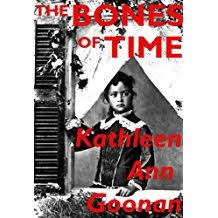 My web page is www.goonan.com, and it has excerpts, essays, and many travel articles, most of which appeared in The Washington Post.
My web page is www.goonan.com, and it has excerpts, essays, and many travel articles, most of which appeared in The Washington Post.Signed hardcovers of CRESCENT CITY RHAPSODY, LIGHT MUSIC, THE BONES OF TIME, IN WAR TIMES, and MISSISSIPPI BLUES are available via my web page at https://www.goonan.com/orderform.html.
THE BONES OF TIME, my second novel (1996), was an Arthur C. Clarke Award finalist, and is available in ebook format at Amazon.
Signed Hardcover at https://www.goonan.com/orderform.html
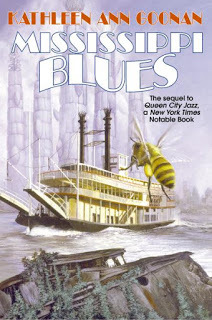 MISSISSIPPI BLUES, my third novel, is the second novel in my NANOTECH QUARTET, for which I was inducted into the Darrell Award Hall of Fame. Signed hardcover available at https://www.goonan.com/orderform.html
MISSISSIPPI BLUES, my third novel, is the second novel in my NANOTECH QUARTET, for which I was inducted into the Darrell Award Hall of Fame. Signed hardcover available at https://www.goonan.com/orderform.html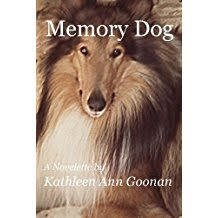 "Memory Dog" was a Sturgeon Award runner-up. It is available on Amazon.
"Memory Dog" was a Sturgeon Award runner-up. It is available on Amazon.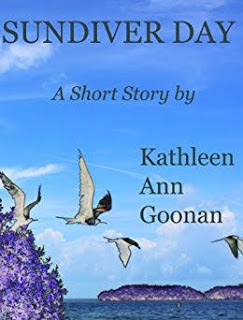 "Sundiver Day," a novelette ebook, is also available on Amazon.
"Sundiver Day," a novelette ebook, is also available on Amazon.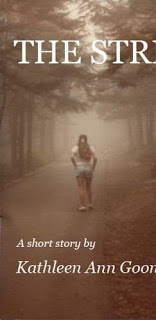 "The String" was a Nebula Award finalist. Available at Amazon.
"The String" was a Nebula Award finalist. Available at Amazon.Thanks, Kathleen, for sharing your insights into writing and your career. You've given us a great deal of work to enjoy. Please visit with us again when your new novel is ready!
Be sure to visit Kathleen's website www.goonan.com to learn more about her work and to order autographed copies!
Published on May 03, 2017 13:45
Kong: Skull Island (2017) Review
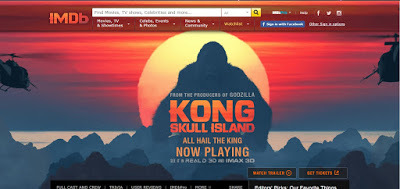
I love monster movies. Kaiju in Japanese. I recall seeing the King Kong remake as a kid, the one with Jeff Bridges and Jessica Lange.
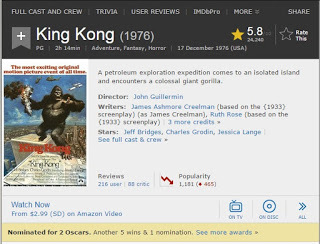
Kong was awesome, the movie felt big and epic and totally believable. And it had the primal, sexual element embodied in the Beauty and the Beast alpha-male motif involving Kong and Lange.
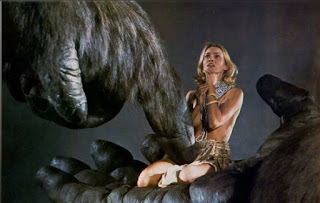
I saw the 2005 remake starring Naomi Watts, Jack Black, and Adrien Brody, and of course directed by Peter Jackson, who was hot off his Oscar wins for The Lord of the Rings.
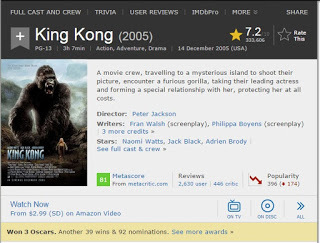
This version was good, too; the part when the guy is eaten head-first by that giant worm haunts me to this day (I should do a separate blog about this: movies in which people are eaten alive; no thanks!). The FX were of course excellent, the performances were fine, I liked Jack Black's zaniness as the a-hole responsible for Kong winding up in the city, where he meets his demise. But I don't recall much more than that. It was a bit of a surprise to see Brody in the action hero role. Likewise for his playing the lead in 2010's Predators.
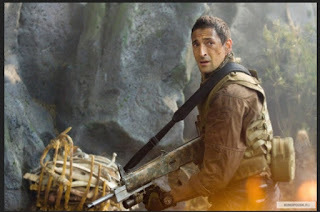
He pulled it off quite well, actually. I think it's him endeavoring to play against type, with that "type" being the soft-spoken introspective tortured artist people came to expect after seeing him in The Pianist. Brody and Paul Rubens should do a movie together in which they play brothers. Perhaps a Pee-Wee reboot.
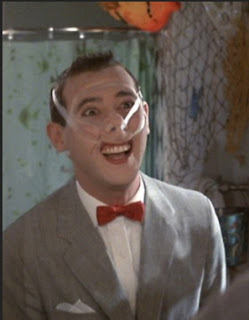
Or something actiony and against type for Rubens, akin to what he did in Buffy the Vampire Slayer after the whole sordid, completely blown out of proportion indecent exposure thing.
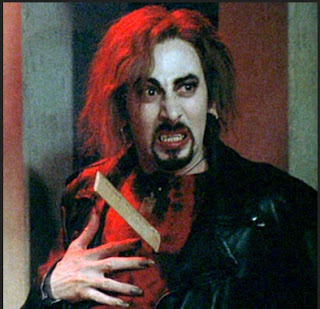
I think that would be cool. Don't they look as though they could be brothers?
The next monster movie I seem to recall is Cloverfield.
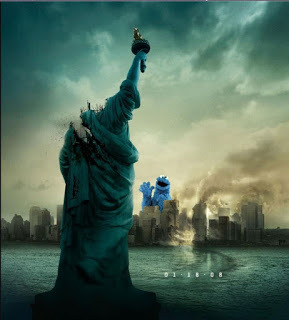
A lot of people hated it; I friggin' loved it. I recall seeing the movie poster at a movie theater and thinking there was something to it; it was intriguing; I didn't know why. But I knew I was going to see it. I deliberately avoided learning anything further about the film. And when I did see it, I was not disappointed. The first-person, found-footage genre/technique was losing steam by this point, given that The Blair Witch Project had come out in 1999 and Cloverfield debuted nine years later in 2008.
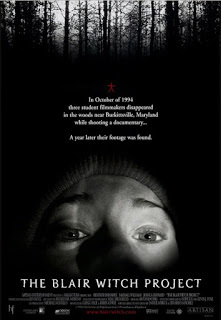
Cloverfield was awesome. Lizzy Kaplan and T.J. Miller were still mostly unknowns, and they stole the show!
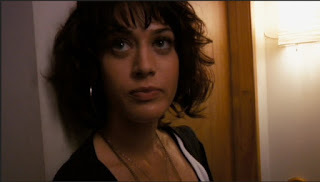
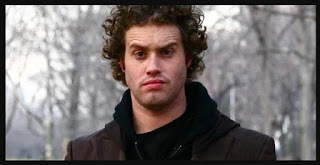
So much so that if you look up Cloverfield on IMDB and check the cast listing, they appear ahead of
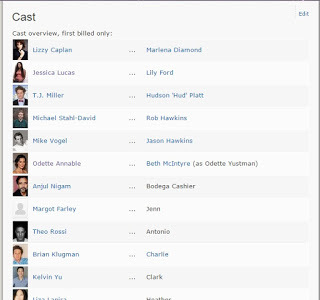
We pretty much never even see T.J. Miller; we mostly hear him as he is the evening's cinematographer. Keep in mind, this was well before he was whacked in Transformers - Age of Extinction (2014). So, a lot happened for T.J. in the intervening six years.
On a side note, Cloverfield II sucked. Its actual title is 10 Cloverfield Lane.
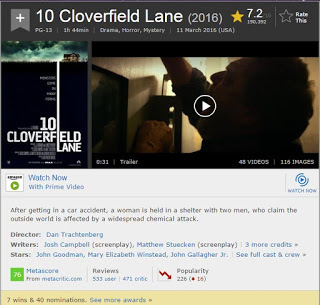
It's loosely related to the first film. John Goodman was awesome. But the film ultimately didn't work. It has competing elements and manages to be very good... until it shoots itself in the foot.
It's worth seeing but... But I digress. Although it is interesting that John Goodman is in that film as well as in Kong: Skull Island.
The next kaiju film I recall is Pacific Rim, which I thought was friggin awesome. (It was from this film that I learned the term kaiju.)
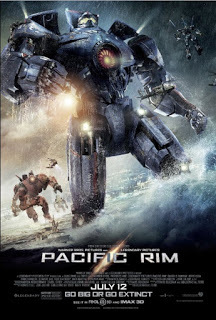
It was amazing. All the way around. (Imagine Kong vs. a kaiju! But let's not get ahead of ourselves.)
I would be remiss, however, if I neglected to mention that there is a sequel coming. Pacific Rim: Uprising.
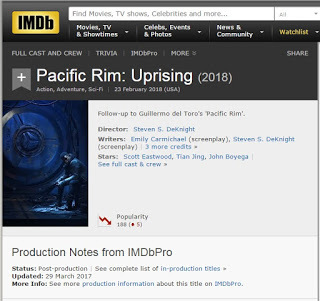
The above image was tweeted by John Boyega, along with 3 words: I AM PENTECOST.
What does THAT mean? Is he Idris Elba (who was awesome!) as a young man? Is he Stacker Jr.?
We shall wait and see!
It's currently in post production and is slated for early 2018, so it's only a year-long wait. Although I'm certain we'll get more info before then. Charlie Day and Burn Gorman are back, reprising their roles from the first film in which they nearly stole the show, along with Ron Pearlman as Hannibal Chau.
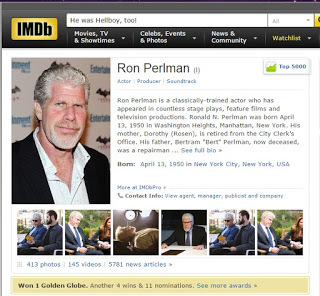
Godzilla was also surprisingly good. I'm referring to the 2014 edition; not the 1998 edition with Matthew Broderick and Jean Reno.
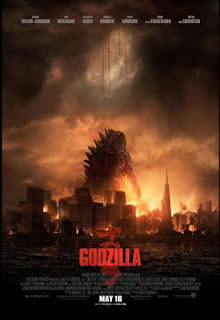
Which brings us back to Kong: Skull Island (for reasons which shall become clear shortly). I recall seeing the teaser trailer (as opposed to the full, final trailer) on TV and thinking, "Oh, lord, another King Kong reboot..." But I gave the trailer a chance and, after having seen it, I thought it might/could be good.
The visuals were excellent. It didn't hurt that Sam Jackson is in it. So I filed it away in the "I'll get around to it" category.
According to Wikipedia, the film was supposed to be released in November, 2016 but was moved to March 2017. Obviously the election was the reason. All the movies which came out during that time bombed. Everyone was focused on the election and politics so there was no space available in the collective unconscious for entertainment. It would be interesting to see what would have happened to all those flops had they, like K:SK, had their release dates pushed back.
At any rate, K:SK opened March 10, 2017 and the box office was quite good. To date it has been the top grosser for 2017 behind only the live-action Beauty and the Beast.
There seems to be a theme here: women and beasts. Animalistic attraction. Alpha-male-ism.
K:SK director Jordan Vogt-Roberts (Kings of Summer; 2013) did a good job with the picture, as did the three credited, though separate, screenwriters:
(from Wikipedia)The script saw a number of screenwriters attached before filming. Seeking the continuity between the King Kong and Godzilla worlds, Max Borenstein (writer of 2014's Godzilla) wrote the first draft, while John Gatins was hired to write the second draft.[19] Borenstein's initial influence was Apocalypse Now , revealing, "What popped into my head for the paradigm of the movie was Apocalypse Now. That’s obviously a war movie, but I liked the idea of people moving upriver to face a misunderstood force that they think of as a villain, but ultimately they come to realize is much more complicated."[20] In August 2015, it was revealed that Dan Gilroy had also collaborated on the script with Borenstein and Gatins.[21] On August 18, 2015, it was confirmed that Derek Connolly was also doing script rewrites.[22] Borenstein worked a final pass on the screenplay before shooting began, and credited the screenplay to all of the writers, saying, "It was definitely collaborative in terms of what’s on the screen, though none of us worked together. There are pieces of my work in there as well as the work of the other two writers and John Gatins, who was credited for story. Everybody had a really good hand in it."[20].....
From the get-go, K:SK has a stylized aesthetic. There's a compelling opening sequence which transitions into an impressive historical credit sequence featuring a lot of actual footage and audio from actual events. It lands us in 1973, during the U.S. pullout of the Vietnam War.
The first thing I noticed, besides how skinny John Goodman is (he lost 100 lbs by cutting out sugar, hiring a trainer, and working out six days per week), is that Richard Jenkins is in it, playing a Senator who is too busy for the tinfoil hat-antics of Goodman and his sidekick played by Corey Hawkins (Straight Outta Compton, TWD, Iron Man III). Hawkins manages to convince Jenkins that their expedition has merit, if for no other reason than because the USA needs to reconnoiter the island before the Soviets do.
Thus the adventure begins.
We find ourselves in Da Nang, Vietnam, at a U.S. Army air base. There are Hueys everywhere. Accompanied by the signature 60s sound of "Time Has Come Today" by The Chambers brothers.
That's another big thing you'll notice about K:SK; the music. The soundtrack is phenomenal.
The sound is big, the sets are big, the cinematography is big. It's certainly a nod to Apocalypse Now, which Francis Ford Coppola funded, at least in part, by taking a loan against his own house. That's commitment.
Fun fact: Nicholas Cage is Coppola's nephew. But Cage didn't want to trade on his uncle's name so he kept the fact on the down-low as he built his own career as an actor. If you haven't seen him in 1983's Shakespearean romantic comedy Valley Girl, you should.
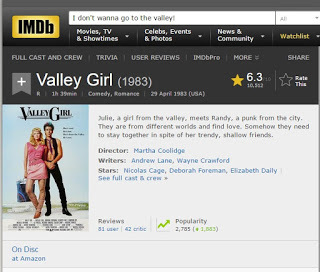
If you're not familiar with the film, you're likely familiar with its soundtrack, particularly "I Melt With You" by post-punk/new wave band Modern English. It's one of the greatest songs of all time. For sure.
If you remember when this song and this movie came out, you're probably feeling a tad whimsical about now.
So let's get back to giant apes.
Kong: Skull Island is quite well done. It succeeds far more than it fails. It hits all the notes: zealous but kinda effin' stupid people on an unfamiliar island; hyjinks ensue involving all manner of bizarre creatures and some of those people having a fairly bad day.
I recommend it.
SPOILERS:
Remember the iconic imagery of Kong atop a skyscraper, swatting at airplanes? Great stuff, right? Well, they made certain to include such a scene in K:SK. And it's my only real fault with the film (other than the fact that Samuel L. Jackson's U.S. Army Colonel character is SO frickin blind that it's hard to swallow). Real helicopter pilots would not buzz around a giant ape waiting for it to knock them out of the sky. They would immediately fall back or climb up to a thousand feet, well out of range of Kong and his fists. (Remember the fists when you watch the movie!)
The only other element of the film which counts as a spoiler is one I shall not reveal. I shall not spoil it for you.
Unless you've seen the movie.
If you HAVE seen the movie, continue reading, so we can discuss it.
If you have NOT seen the movie, stop now, go see it, and come back and join the conversation.
Okay?
Don't let it be spoiled for you. Like the way I had Eagle Eye and The Village ruined for me. That still pisses me off. Have you seen The Village? If not, see it. If so, did you know the twist? M. Knight Shyamalon likes his twists (c.f. The Sixth Sense). Imagine sitting through The Village knowing the end already, the twist... It sucked!
So, if you haven't seen Kong: Skull Island . . . STOP READING. Say, "TTFN!"
....................................................
Okay, briefly, I wanted to talk about the opening sequence of the film and how it ties in with the rest of the movie. Upon a second viewing, it all makes perfect sense. But, somehow, I had no idea who played the grown-up, stranded American P-51 pilot who crashed on the island. I guess I only saw the teaser trailer, and he isn't in it. Which was a wise move. Because it makes for a hilarious, exciting reveal. I read that Michael Keaton was originally going to play this role. It's SO much better the way it turned out. It was so awesome. I absolutely loved it. Along with the stunning visual imagery and the helicopter sequences, it was my favorite part of the whole film.
Also, did you sit through the entire credit sequence? If yes, cool; if not, do so. I noticed the end credits were like 8 minutes long, so I figured there had to be more coming. I was not disappointed.
Also noteworthy is the fact that a new universe has been created with this film. Kong is going to meet Godzilla.
(from Wikipedia)Director Jordan Vogt-Roberts had expressed interest in doing a film about Marlow and Gunpei's time on the island, stating, "I keep joking that personally I'm more interested in doing a $30 million version of young [REDACTED] on the island. Just some weird, the odd-ball monster comedy with him and Gunpei. [ sic ]"[74]
(They should SO do that!!!)
In May 2016, Warner Bros. announced that Godzilla vs. Kong would be released on May 29, 2020.[75] In March 2017, Legendary assembled its "writers' room" to develop the MonsterVerse and story for Godzilla vs. Kong.[76]
We therefore have all manner of kaiju fun to look forward to. Dwayne Johnson has begun work on Rampage, so that should be fun.
May 29, 2020. Three years and 26 days from now as of this writing. Where do you see yourself in three years?
The mind boggles.
Thanks for reading.
Published on May 03, 2017 09:46
April 21, 2017
@SFWA & #WriteStuff @StoryBundle are Now Available!
The AI bundle is over!
Hopefully you grabbed your bundle.
But not to worry, as StoryBundle always has something amazing to offer.
Ergo, they have two bundles currently available.
The SFWA bundle, which is a collection of 12, yes twelve, great reads from professional science fiction writers, all of whom are esteemed members of the Science Fiction and Fantasy Writers of America. They've been around for more than half a century. And you must be a paid, working writer in order to be eligible for membership.
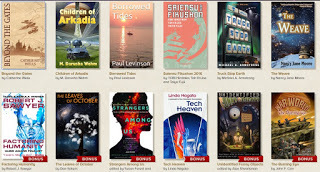
Grab it now, before it ends Wednesday May 3rd.
Next up is the WriteStuff bundle, a collection of 12 books on writing. Books about writers, by writers, for writers, and for aspiring writers. Because we all know that writing is a trade in which we are all apprentices and no one ever becomes a master. Was it Bradbury who said that???
The Write Stuff bundle is curated by Kristine Kathryn Rusch, author of Goals & Dreams: Freelancer's Survival Guide. The Write Stuff bundle expires Thursday May 11.
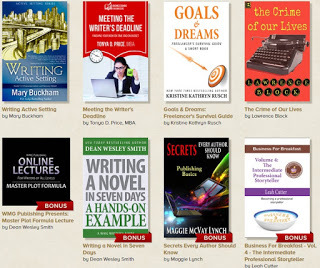
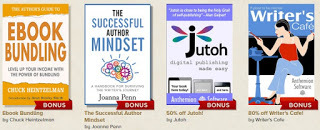
Hopefully you grabbed your bundle.
But not to worry, as StoryBundle always has something amazing to offer.
Ergo, they have two bundles currently available.
The SFWA bundle, which is a collection of 12, yes twelve, great reads from professional science fiction writers, all of whom are esteemed members of the Science Fiction and Fantasy Writers of America. They've been around for more than half a century. And you must be a paid, working writer in order to be eligible for membership.

Grab it now, before it ends Wednesday May 3rd.
Next up is the WriteStuff bundle, a collection of 12 books on writing. Books about writers, by writers, for writers, and for aspiring writers. Because we all know that writing is a trade in which we are all apprentices and no one ever becomes a master. Was it Bradbury who said that???
The Write Stuff bundle is curated by Kristine Kathryn Rusch, author of Goals & Dreams: Freelancer's Survival Guide. The Write Stuff bundle expires Thursday May 11.


Published on April 21, 2017 06:46
April 20, 2017
The #ArtificialIntelligence @Storybundle ENDS TODAY April 20 Midnight Eastern, 9 PM Pacific #SFWApro
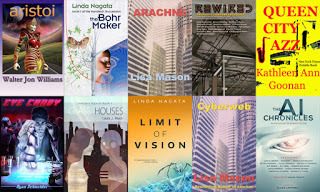
The Artificial Intelligence Storybundle
Curated by Lisa MasonArtificial Intelligence—A.I. When computers become conscious. Self-aware. Genuinely as intelligent as human beings. Will A.I. benefit humanity? Or become our greatest enemy?In the March, 2017 Scientific American, Gary Marcus, a professor of neural science at New York University, joins futurist Ray Kerzweil, theoretical physicist Stephen Hawking and others in concluding that the Singularity—that moment when A.I. truly exists—has not yet arrived. Will not arrive until the future.That hasn’t stopped science fiction writers from tackling difficult questions about A.I., speculating about the future, and asking what if? In the most entertaining way! You must check out these amazing books from authors—bestselling, award-winning, as well as popular indies—in the A.I. Storybundle.In New York Times Bestselling Walter Jon Williams’ Aristoi, an elite class holds dominion over a glittering interstellar culture with virtual reality, genetic engineering, faster-than-light travel, artificial intelligence, nanotechnology, telepathic links with computers, and more. But murder threatens to rip that world apart. In award-winning Linda Nagata’s The Bohr Maker, a powerful, illicit device known as the Bohr Maker, a microscopic factory full of self-replicating machines programmed to transform a human host into a genius-level nanotech engineer. In Nagata’s Limit of Vision, biotechnologists enhance their own cognitive abilities and the experiment goes terribly wrong. In Locus Hardcover Bestsellers Arachne and Cyberweb, Lisa Mason follows telelinker Carly Quester as she confronts an A.I. therapist and finds herself entangled in the machinations of powerful A.I. sengines who want to destroy humanity. In Rewired, editors John Kessel and James Patrick Kelly present stories about A.I. and the future by William Gibson, Bruce Sterling, Pat Cadigan, Jonathan Lethem, and twelve others. In Queen City Jazz, award-winning Kathleen Ann Goonan’s teenage heroine Verity journeys to the technologically superior but dangerously insane “enlivened” city of Cincinnati. In Glass Houses:Avatars Dance, acclaimed Laura J. Mixon takes us to a dystopian Manhattan of the next century where Ruby and her Golem, six hundred pounds of vaguely human-shaped, remote-operated power, run into serious trouble. In Eye Candy, popular indie author Ryan Schneider takes us next to Los Angeles of 2047 where a roboticist famous for his books on the inner workings of artificially-intelligent beings finds himself on a blind date with a beautiful robopsychologist named Candy. Trouble! And award-winning editor Samuel Peralta offers thirteen stories by new bestselling authors addressing the Singularity and A.I. in The A.I. Chronicles Anthology.As always at Storybundle.com, you the reader name your price—whatever you feel the books are worth. You may designate a portion of the proceeds to go to a charity. For the AI Storybundle, that’s Science Fiction and Fantasy Writers of America (“SFWA”). SFWA champions writers’ rights, sponsors the Nebula Award for excellence in science fiction, and promotes numerous literacy groups.The basic bundle (minimum $ 5 to purchase, more if you feel the books are worth more) includes:Aristoi by Walter Jon WilliamsThe Bohr Maker by Linda NagataArachne by Lisa MasonRewired: The Post-Cyberpunk Anthology, edited by John Kessel and James Patrick Kelly including stories by William Gibson, Bruce Sterling, Pat Cadigan, Jonathan Lethem, and twelve othersQueen City Jazz by Kathleen Ann GoonanTo complete your bundle, beat the bonus price of $15 and you’ll receive another five amazing books:Eye Candy by Ryan SchneiderGlass Houses by Laura MixonCyberweb by Lisa MasonLimit of Vision by Linda NagataThe A.I. Chronicles Anthology edited by Samuel Peralta including stories by David Simpson, Julie Czerneda, and eleven othersSo there you have it! Download your own bundle with award-winning, best-selling, and indie speculations about A.I. and the far future. The Artificial Intelligence Storybundle is both historic and unique, an excellent addition to your elibrary providing world-class reading right now, through the summer, and beyond.–Lisa Mason, CuratorThe A.I. Storybundle is available only from March 29 to April 20, 2017 and only via Storybundle. The bundle is easy to read on computers, smartphones, and tablets, as well as Kindle and other ereaders via file transfer, email, and other methods. You get multiple DRM-free formats (.epub and .mobi) for all books.When the bundle is gone, it’s gone. Download yours today!It’s super easy to give the gift of reading with StoryBundle, thanks to our gift cards – which allow you to send someone a code that they can redeem for any future StoryBundle bundle – and timed delivery, which allows you to control exactly when your recipient will get the gift of StoryBundle.Why StoryBundle? Here are just a few benefits StoryBundle provides.Get quality reads: We’ve chosen works from excellent authors to bundle together in one convenient package.Pay what you want (minimum $ 5): You decide how much these fantastic books are worth to you. If you can only spare a little, that’s fine! You’ll still get access to a batch of thrilling titles.Support authors who support DRM-free books: StoryBundle is a platform for authors to get exposure for their works, both for the titles featured in the bundle and for the rest of their list. Supporting authors who let you read their books on any device you want—restriction free—will show everyone there’s nothing wrong with ditching DRM.Give to worthy causes: Bundle buyers have a chance to donate a portion of their proceeds to charity. The A.I. Storybundle forwards your donations to Science Fiction and Fantasy Writers of America.Receive bonus books to complete your bundle. When you beat our bonus price of $ 15, you’re not just getting five books, you’re getting ten!The A.I. Storybundle ENDS TODAY Thursday, April 20, 2017 midnight Eastern, 9 P.M. Pacific! Pay what you want for the core bundle, unlock the bonus books, donate to charity. Explore Artificial Intelligence and how A.I. will affect the future in Aristoi by Walter Jon Williams, The Bohr Maker by Linda Nagata, Arachne by Lisa Mason, Rewired: The Post-Cyberpunk Anthology, edited by John Kessel and James Patrick Kelly with stories by William Gibson, Bruce Sterling, Pat Cadigan, Jonathan Lethem, and others, Queen City Jazz by Kathleen Ann Goonan, Eye Candy by Ryan Schneider, Glass Houses by Laura J. Mixon, Cyberweb by Lisa Mason, Limit of Vision by Linda Nagata, and The A.I. Chronicles Anthology, edited by Samuel Peralta. Download yours TODAY at https://storybundle.com/ai! When it’s gone, it’s gone….
Published on April 20, 2017 08:22
10 Questions with Hugo Award Winner Laura J. Mixon (@LauraJMG)
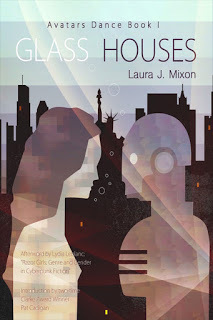
This Author Spotlightfeatures
LAURA J. MIXON
author of
Glass Houses
SF novelist and Hugo-winning blogger Laura J. Mixon wrote her first story for her own amusement at age eight. At age 11, she discovered science fiction in the local library and never looked back. Her popular SF thriller Up Against It came out from Tor Books (as M. J. Locke) in 2011 and is due for re-release soon as part of an upcoming trilogy. Set among the asteroids, it is the first book of WAVE, a series of novels
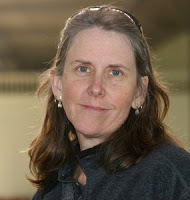 about savvy and desperate people (and other beings) living in a future, settled solar system.
about savvy and desperate people (and other beings) living in a future, settled solar system.Author of six novels and assorted shorter works, including the highly acclaimed cyberpunk trilogy AVATARS DANCE (Glass Houses, Proxies, and Burning the Ice).
She and fellow SF writer Steven Gould stabbed the cake/tied the knot at WeddingCon in early 1989. They have collaborated on one novel and two world-class daughters, now grown (who might even be spotted wandering the halls of certain cons and costuming events). They now live in New Mexico with their daughters.
She is an environmental engineer and served two years in Kenya in the Peace Corps. Her work is often associated with the cyberpunk movement, and has been the focus of academic studies on the intersection of technology, feminism, and gender. She is a graduate of the Clarion writing workshop and an instructor at the Viable Paradise genre writing workshop on Martha's Vineyard. She blogs occasionally at laurajmixon.com and feralsapient.com and tweets as @LauraJMG.
1.How did you get into writing and why do you write?
I grew up in the late sixties and early seventies in a neighborhood with a lot of kids, and my favorite game was Pretend. We were a roving pack of AR players, back when AR was all in your head. We riffed off of Star Trek, Land of the Giants, Lost in Space, and the Avengers (the British spies version with Diana Rigg, ohmigod) and The Man /Girl from U.N.C.L.E, those creepy Saturday matinees like The Twilight Zone and The Man with Xray Vision. We had the best adventures.
The one thing that really bugged me, though, was that I had no control over the plot. The other kids all had their own ideas about what was supposed to happen, and when I’d say, for instance, “Bang! You’re dead,” they’d jump back up and say, “No, I’m not!” So I started writing my stories down.
Little did I know what I was letting myself in for; my own characters have even LESS desire to behave. Hah!
2.What do you like best (or least) about writing?
I think it’s the same thing that drew me to Pretend when I was a kid. That desire to be transported into another world. To be surprised by the unexpected things that happen to my characters, and how they respond. That sense of wonder and delight you get when everything seems chaotic and out of control, and suddenly it all clicks into place and you see that deeper pattern.
3.What is your writing process? IE do you outline? Do you stick to a daily word or page count, write 7 days a week, etc?
For the world building, I tend to put a lot of work into research and design. For the characters and plot, I’m a mostly-pantser. I have a few high points I know I want to hit, but the main pleasure I get from writing comes from being surprised by what I discover as I write.
4.Who are some other writers you read and admire, regardless of whether they are commercially “successful?”
Oh, my God, there are so many great writers out there!
The other writers in this bundle are all pretty awesome. My husband Steve and I have always been fans of Lisa Mason, Linda Nagata, and Walter Jon Williams, and now I’ve bought the AI Storybundle and am eager to read yours and Kathleen Ann Goonan’s as well.
I also had the pleasure of being on the Philip K. Dick jury a couple of years ago, and discovered several writers I loved. I could go on and on about all six of the books on the nominees list. We had a hard time narrowing the list down to six. Here’s the list. You’re in for a treat!
You have to check out the winner, Meg Elison’s The Book of the Unnamed Midwife. And the special citation winner, Jennifer Marie Brissett’s Elysium, blew my freakin mind. So much creativity in the worldbuilding, characters I loved, and masterful control over her prose. Highly recommended.
I also love Cory Doctorow’s stuff. His Little Brother series is magnificent. For the Win made me cry my eyes out.
Martha Wells’s Raksura series is sooooo goooood. Anything by Nalo Hopkinson.
Marko Kloos’s Frontlines series, and Curtis Chen’s Waypoint Kangaroo. Charlie Jane Anders’s All the Birds in the Sky.
And Andrea Hairston’s fantasies! She has a new one out, Wild Do Magic for Small Change. Wonderful.
5.Should the question mark in the above question be inside or outside the quotes?
Outside, dammit! sayeth the engineer. The writer in me shrugs; whatever—I’m in it for the fun and glory and adventure. Just be consistent with that punctuation stuff and use it to tell a great story, and I’m yours.
6.What’s your stance on the Oxford Comma?
Pro. I’ll fight you.
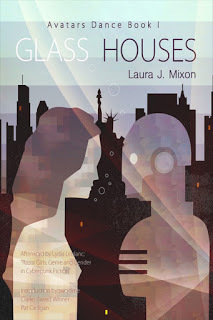 7.What is your book Glass Houses about and how did it come to fruition?
7.What is your book Glass Houses about and how did it come to fruition?It was an out-take—a sort of side story—that emerged while I was writing Proxies, my novel in the same series. Ruby Kubick, a lesbian waldo operator who used her robotic drones to avoid going outside or interacting with anyone in person, sprang to life in my head, and she just wouldn’t go away. But her story didn’t fit inside the other work, which was already too big. So I gave her her own story.
Ruby is a young woman in a future, drowned New York City, about a century or so from now. She has direct brain interface tech, which she uses to control a set of junkyard robots, and uses them to scrape out a living doing salvage. On one operation during a storm, she discovers a wealthy man who got stranded in a decrepit high-rise. She attempts to rescue him, and things go badly awry from there…
It’s a noir-ish mystery-adventure, and also a story about Ruby, who has fallen for a woman who doesn’t love her back, working on how to take control of her own fate, and get out of this trap she’s in, this sticky web of life circumstances and choices she’s made whose consequences she couldn’t have predicted.
8.What’s your current writing project?
Thanks for asking! :D I have a few nifty projects I’m having fun with.
My publisher and I want to do at least two more books in my Wave series, along with a re-release of the first book, Up Against It. The series is about a middle-future, partially-settled solar system, with rogue AI and humans of various sorts trying to survive. UAI starts with a disaster that puts the asteroid colony at risk, and turns into a political thriller. It’s sometimes compared to James S.A. Corey’s The Expanse, as their book and mine came out about the same time and feature asteroids and rogue tech and races against time… nyeh heh heh…
I’m also nearly done with a near-future SF novel about the space race to Mars, and a young woman who gets caught up in the events. It’s called Child Left Behind.
I read an early draft of the first few scenes back in 2013 at SF in SF (SF in SF, if you haven’t heard of it, is a sort of happy-hour—interviews and readings—style event hosted by Terry Bisson and organized by Rina Weisman and Rick Kleffel. It is a BLAST, and if you’re ever in the Bay area, definitely go).
Here’s Rick’s write-up about our event (my entry’s the second one down), and if you want a taste of my work in progress (nearly done now!), you can hear me read an early version of the first chapter here.
I’ve also been working on a cool project in George R.R. Martin’s Wild Cards universe, but am sworn to secrecy there, for now… I’ll let you know when and if I can reveal the details!
9.What book(s) are you currently reading?
One of the great perqs of being a writer is knowing other writers—which means having access to works hot off the writer’s keyboard! I’ve managed to snare an advance reading copy of Annalee Newitz’s Autonomous, which I’ve just started.
Up next is Nalo Hopkinson’s The Blackheart Man. I’d gotten to read snippets of it while she was working on it, so I’m very excited to read the finished work!
10.Who or what inspires your writing?
The people who came before. Ursula K. LeGuin and Samuel R. Delany and Robert A Heinlein and Clifford D. Simak and C.L. Moore. Bradbury and Asimov and Williamson and Butler. Tanith Lee and Mary Shelley and H. G. Wells and so many others. Their stories helped me know how much bigger and weirder and full of wonders the world was than I could ever have imagined, at a time when I desperately needed to know that.
The people coming up now. Newer writers, young and old, emerging into the spotlight of readers’ attention—people of so many cultural backgrounds and identities that have been under-represented in the past, beginning to achieve recognition after being kept in the shadows for far too long. Telling new stories. Showing us thrilling new ways to tell the old ones.
The people who will come after.
I believe the literature of the fantastic is not just unbelievably cool and fun to read; it also plays a crucial role in helping guide us in our efforts to curate a multi-cultural, sustainable future. An ecologically healthy planet, a future welcoming and plentiful, with room for all our hopes and dreams.
So yeah. All that mushy “boldly-go-holding-hands” stuff.
Finally, is there anything you’d care to add? Please also include where people can read your published stories, buy your book, etc.
Nope, all good! You can get copies of my Avatars Danceseries, as well as Up Against It, which I wrote as M. J. Locke, as e-books on Amazon or iTunes or Barnes and Noble. I have a novelette about climate change, “True North,” in Welcome to the Greenhouse, as M. J. Locke, and I’m on Twitter, mostly ranting about fascists these days (mixed in with the occasional cool science gif, photo, or link and book squee), as @LauraJMG. Stop by and say hey.
Thank you, Laura, for all the info, links, and insight! Please visit again when UAI, Child Left Behind, and the GRRM top-secret project is/are ready! We'd love to learn more.
Be sure to see Laura's Glass Houses in the Artificial Intelligence StoryBundle if it's still available. Otherwise, visit her online and anywhere books are sold!
Published on April 20, 2017 08:06
April 18, 2017
Check Out These Amazing Stories in The A.I. Chronicles edited by Samuel Peralta The Artificial Intelligence Storybundle! #SFWApro #artificialintelligence
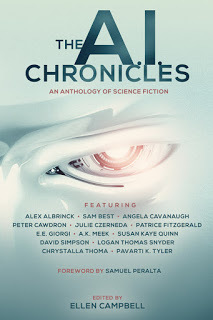
The A.I. Chronicles (Future Chronicles Book 2) edited by Samuel PeraltaSynopses of Stories in the AnthologyThe Syntax of Consciousness by Pavarti K. Tyler
With one small implanted device, you will experience complete sensory integration with all the information available on the global net. Say goodbye to VI Fees and holo-displays. It is now all available in the blink of an eye. Enter the next lottery wave to receive your free InGen Corp Jiminy Implant. “Jiminy: The little voice in the back of your head.”Piece of Cake by Patrice Fitzgerald
Rule by A.I. is a fact of life for those under the thumb of the Federal United. There will be a certain amount of exercise every day. Citizens will be on time. Appropriate mates will be identified from amongst candidates with suitable genetic traits… and a proper weight will be maintained. But sometimes you’ve just got to go off the reservation.Restore by Susan Kaye Quinn
What if Asimov’s Three Laws of Robotics were replaced by a single emotion—unconditional love? Restorative Human Medical Care Unit 7435, sentience level fifty, wants to heal the human master it loves, but Unit 7435 finds there is a price to be paid for love… and for failing in its primary mission.Narai by E.E. Giorgi
When artificial intelligence takes over the family practice where he works, Dr. Peter Sawyer struggles to accept his new role as a mere supervisor instead of a clinician. With the aid of psychotherapy, he slowly adjusts to his new routine, until the sudden death of an anorexic patient makes him question everything, even his own life.Left Foot on a Blind Man by Julie E. Czerneda
Replacing failing body parts with non-biological equivalents isn’t new. Wooden legs and teeth have been found in corpses thousands of years old. What is? How smart they are. “Left Foot on a Blind Man” is a cautionary tale about making such replacements too smart for our own good.Sub-Human: Nash’s Equilibrium by David Simpson
Craig Emilson, a young doctor, is sucked into military service at the outbreak of World War III. Enlisting to become a Special Forces suborbital paratrooper, Craig is selected to take part in the most important mission in American military history—a sortie into enemy territory to eliminate the world’s first strong Artificial Intelligence.Auto by Angela Cavanaugh
Auto was the most advanced A.I. ever created. But when he learned about his backups, he began to wonder what exactly the self in self-aware might mean. When he fears for his existence, he escapes into the internet. And an intelligence built to learn, combined with a nearly endless amount of information, is a dangerous combination.Eve’s Awakening by Logan Thomas Snyder
An overworked, under-appreciated technician seizes the opportunity presented by an FBI raid on his company to steal corporate property. What he discovers is like nothing he could have imagined—an artificial intelligence that may not even be the first of its kind in existence. Meanwhile, the A.I. known as Eve is concerned only with finding her “parents,” a quest that will alter the lives of everyone who comes into contact with her—for better or for worse.Maker by Sam Best
Decades after the birth and abandonment of artificial intelligence, a reclusive inventor comes face to face with an evolved form of his creation. The world as he knew it is changed as a direct result of his tinkering. Yet with the arrival of his creation, the inventor learns there is hope to correct his past mistakes, if he is brave enough to try…Vendetta by Chrystalla Thoma
Plagued by dreams of the distant sea, Imogen wakes up one morning to find a Controller asking questions—questions about the dreams she’s not supposed to have. Curious to know more, she eavesdrops on their conversation, and what she hears isn’t reassuring. It appears that her memory has been tampered with, that she has tech implanted in her body—that is, more tech than the average human—and even worse, she’s not even her parents’ daughter. The implanted tech, however, might be her most immediate problem. Under the Tech Directive, exceeding a certain percentage of tech in one’s body can mean on-the-spot termination. The only person Imogen can trust to share this information with is her friend, Edil. But Edil, with his scar and unexplained head injury, may be hiding secrets of his own—secrets not so different from the ones about to transform Imogen’s life.The Turing Cube by Alex Albrinck
Our lives are turning into a series of 0’s and 1’s, masses of data available to those with the technological know-how to access, assess, and exploit it. And while corporations and governments work to protect sensitive information, no digital information is ever truly safe. Jack Milton lost more than money to just such an exploit; he lost his pride. He’s decided to take matters into his own hands, root out the perpetrators, and bring them to justice, regardless of the personal and professional risks. But he may find that something more valuable than money can be lost.Darkly Cries the Digital by A.K. Meek
In the Deep South, modern-day technology blends with eternal superstition for a family that suffers a tragic loss; the death of their ten-year old son. And now, driven by grief, unable to accept the whirlwind circumstance outside of his control, a business executive makes a fateful decision that severs what remains of his already-broken family.The End by Peter Cawdron
With the death of his grandmother, Professor Joe Browne has had to face his own mortality. Joe doesn’t want to admit there’s an end coming, and yet he knows that just as he turns the final page in a book, one day death will bring his life to a close, or will it? Could life be uploaded into a computer? To answer that question, Professor Browne needs to first understand if a computer could ever develop an artificial intelligence of its own.Created by award-winning author Samuel Peralta, and edited by some of the most-respected editors in the genre, The Future Chronicles is the #1 bestselling anthology series that brings together work from visionary new voices and from the grandmasters of modern speculative fiction. Visit Sam Peralta at http://www.samuelperalta.com The A.I. Storybundle is live, but only TWO MORE DAYS until April 20, 2017! Explore Artificial Intelligence and how A.I. will affect the future in Aristoi by Walter Jon Williams, The Bohr Maker by Linda Nagata, Arachne by Lisa Mason, Rewired: The Post-Cyberpunk Anthology, edited by John Kessel and James Patrick Kelly with stories by William Gibson, Bruce Sterling, Pat Cadigan, and others, Queen City Jazz by Kathleen Ann Goonan, Eye Candy by Ryan Schneider, Glass Houses by Laura J. Mixon, Cyberweb by Lisa Mason, Limit of Vision by Linda Nagata, and The A.I. Chronicles Anthology, edited by Samuel Peralta. Download yours today athttps://storybundle.com/ai. When it’s gone, it’s gone!Tagsanthology, Artificial Intelligence, Artificial Intelligence Storybundle, Samuel Peralta, science fiction, Storybundle Curator, StoryBundle.com, The A.I. ChroniclesCategories2017, A.I., Arachne, Arachne the Novel, Aristoi, Artificial Intelligence, Artificial Intelligence Storybundle, Authors, Books, Bruce Sterling story, Computers, Cory Doctorow story, cyberpunk, Cyberpunk Classic, Cyberweb, Ebooks, Eye Candy, Glass Houses, James Patrick Kelly, John Kessell, Jonathan Lethem story, Kathleen Ann Goonan, Laura J. Mixon, Limit of Vision, Linda Nagata, Lisa Mason, Lisa Mason Fantasy and Science Fiction Author, Lisa Mason Fantasy and Science Fiction Author On Facebook, Lisa Mason Official Website, Lisa Mason on Facebook, Lisa Mason Urban Fantasy Author, Literary science fiction, Michael Swanwick story, Pat Cadigan story, Queen City Jazz, Rewired: The Post-Cyberpunk Anthology, Ryan Schneider, Samuel Peralta, Science fiction, StoryBundle, Storybundle Curator, Storybundle.com, The A.I. Chronicles, The Bohr Maker
Published on April 18, 2017 12:52



